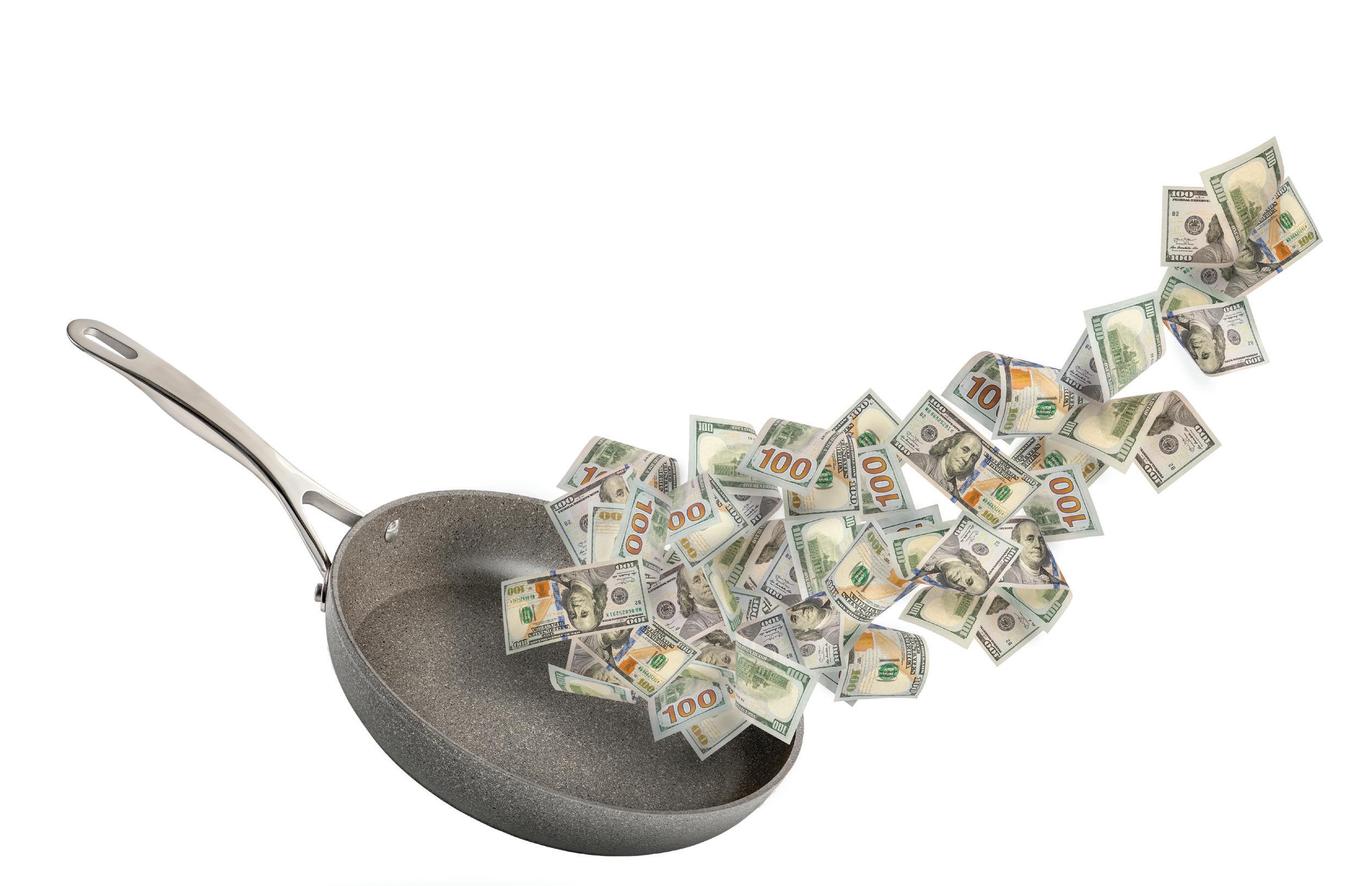
7 minute read
Controlling Food Costs
Club chefs must diligently and creatively control costs while simultaneously satisfying members.
By Joanna DeChellis, Editor
AS COSTS CONTINUE TO RISE AND SUPPLY CHAINS remain
unpredictable, clubs are feeling the pinch. Some are o setting costs by trimming menus and rotating dishes, others are raising banquet prices to o set a la carte, and more are passing the increases along to members and guests while explaining the cold, hard truth that everything simply costs more now.
“No matter what type of operation you run, chefs must work toward the target their property has set for them,” says Gordon Maybury, Director of Culinary at the JW Marriott Miami Turnberry Resort and Spa in Aventura, Fla.
REEVALUATE AND REIMAGINE
Turnberry runs a 24.5% food cost across the resort, considerably lower than most private country clubs. Regardless, Maybury is diligent about hitting that target. In April, the resort evaluated prices year over year and found that the property’s cost of goods went up 25% from 2021.
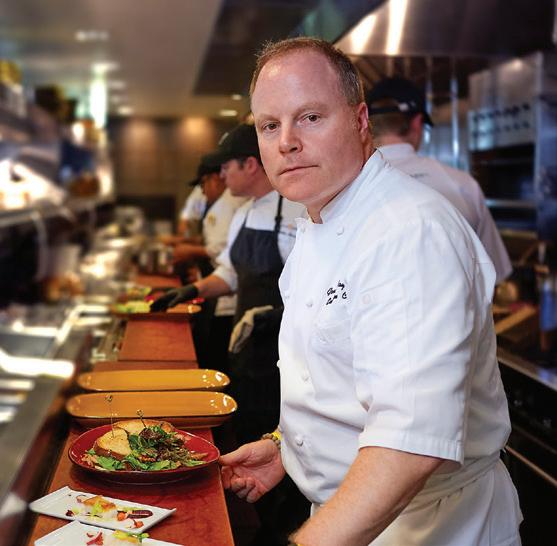

When the JW Marriott Miami Turnberry Resort and Spa compared prices year over year, Gordon Maybury, Director of Culinary, found that cost of goods increased 25%.
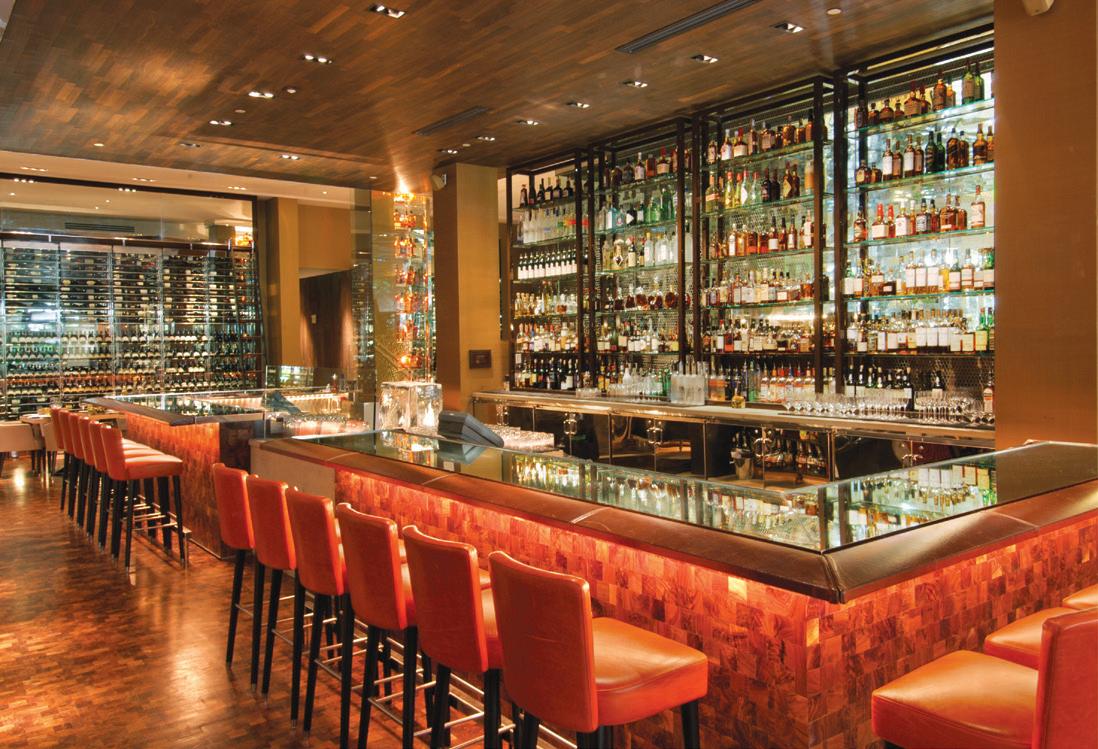
“Some ingredients are outrageously expensive,” says Maybury. “Seabass is nearly double what it was last year, and chicken breasts are up 60%.”
Maybury and his team combed through the report and were surprised to discover that high-cost items, like fi lets, have only gone up by a small percentage. In contrast, items the property doesn’t even charge for, like disposable cutlery and ketchup packets, have skyrocketed.
“This is where the food-cost equation—beginning inventory value plus all monthly purchases minus ending inventory value divided by total food sales—becomes complicated,” says Maybury.
He stresses the importance of inventory management, reducing food waste and intelligent pricing. Everything is considered at Turnberry, from garnishes to the size of the bowls on bu ets to the type of lettuce served in salads.
“We talk with our team and constantly ask if there’s a way to tweak a recipe so we aren’t raising the price to an unreasonable level for our guests,” says Maybury.
Turnberry’s central purchasing department is an essential partner in helping culinary hit its food-cost target. Many of Maybury’s purchases go out to bid through its central purchasing group so the property can get the best quality for the best price.
“We’re fortunate to have nine kitchens and 120 employees between culinary and stewarding,” says Maybury. “We can move our team members around and produce items inhouse that would cost us a great deal to outsource. This also helps control costs.”
Turnberry is also not above removing or modifying dishes that are too costly to o er. For example, crab was taken o the raw bar, and some of the property’s burgers have dropped from an 8-oz. patty to a 7-oz.
“We’re also working with our vendors to lock pricing for an entire month,” says Maybury, who credits Turnberry’s volume with the ability to rate-lock.
“Chefs willing to change and not afraid to challenge the members, guests and teams will succeed,” says Maybury. “Those stuck in a ‘we’ve always done it this way’ mindset will have a tough time.”
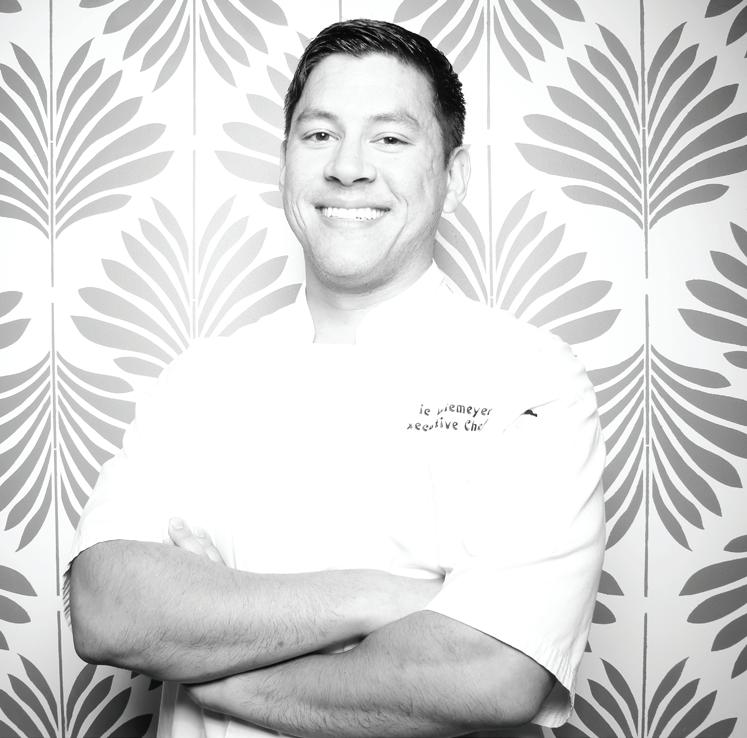
FIGURING OUT THE FREEBIES
Whether it’s candy in the lobby, co ee in the locker room, snack mix at the bar, or apples by the tennis courts, most clubs cater to members with a handful of complimentary o erings.
For the most part, clubs are able to absorb these types of freebies and o set the cost in a number of other ways. Other clubs, like Butter eld Country Club (Oak Brook, Ill.), assign these items a whole separate code.
REDUCE AND REORGANIZE
The Cosmos Club (Washington, D.C.)—a much di erent type of operation than Turnberry—is a private social club located in the nation’s capital. The club does about $5.5 million in F&B and runs a 38% food cost.
Executive Chef Will Rogers, CEC, CCA, says the club’s food-cost percentage has risen 2 points in recent years, but it could have been much more substantial, given the rising cost of everything. He and his team have kept that number low by streamlining menus and focusing on cross-utilization.
“Many of the dishes we serve on the banquet side are based on dishes on our a la carte menu, which helps save on prep and labor,” he says. “We’re also trying to balance di erent proteins and cuts to help o set costs.
Cosmos members love lamb chops. Instead of always serving chops, Rogers might braise a lamb shoulder and turn that into a pasta dish, roll the shoulder into Swiss chard or maybe even do a lamb loin instead of the chop.
Reducing waste through composting, sous vide and pickling has also helped.
“Fundamentally, we strive to use every ingredient to its fullest capacity,” says Rogers. “As a team, we discuss ways to use things like the tops of carrots and leeks, for example. We rely on sous vide for proteins, so we aren’t overproducing, and pickling has always helped us fi nd a way to use products that might be nearing the end of their usable life.”
Reducing waste is a much simpler task now that the club has one centralized storage location in the kitchen.
“During the pandemic, we rethought our storage systems and decided that a central location would prevent hoarding and waste,” says Rogers. “We now have one common dry storage area and one common ripening rack. Our walk-ins have also been reorganized so there are common bins for things like herbs, dairy, eggs and produce.”
All of these strategies serve a dual purpose beyond reducing waste. They encourage Cosmos’ culinary team to be more creative and communicative within the team and with the purchasing o ce.
“There was a period where foie gras was less expensive than crab,” recalls Rogers, noting that crab is an ingredient he can’t 86 from menus. “Fortunately, Cosmos has a purchasing manager and clerk who monitor these things and put them out to bid. We communicate with those individuals multiple times weekly to discuss inventory, sales and pricing.”
Keeping the lines of communication open is the best way for Cosmos to prioritize fi scal prudence and quality.
BALANCING REALITY WITH RESPONSIBILITY
Butterfi eld Country Club (Oak Brook, Ill.) is a traditional country club with more than 600 members. The club does about $6.5 million in F&B with an even split between a la carte and banquet. BCC runs a 30.4% food cost.
Executive Chef Eric Wiemeyer says the club has become much more fi scally minded in recent years. He attributes this a shift to an increase in legacy members working to set the club up for continued success over the long term.
“We rely on our banquet operation to drive down the cost of our a la carte program,” he says. “We also try to be very transparent with the membership and explain why we must raise a la carte prices.”
Wiemeyer changes menus every six to eight weeks at BCC. When he changes the menu, he changes the prices. Once the menu is printed, he tries not to double back.
“We decided that, for this fi scal year, we needed to universally raise prices 10-20% so we could better absorb all the fl uctuations in the supply chain,” he says. “This strategy relies on proper ordering, receiving and inventory controls.”
Wiemeyer stays closely involved in the process. He regularly communicates with accounting to dot the i’s and cross the t’s, and he works with his vendors to forecast based on pre-pandemic numbers.
“I tell my vendors up front that I’m a very needy customer,” he says. “I also hold them accountable.” C+RC

To reduce food costs at The Cosmos Club, Executive Chef Will Rogers, CEC, CCA, (right) centralized storage and launched a comprehensive composting program for waste.
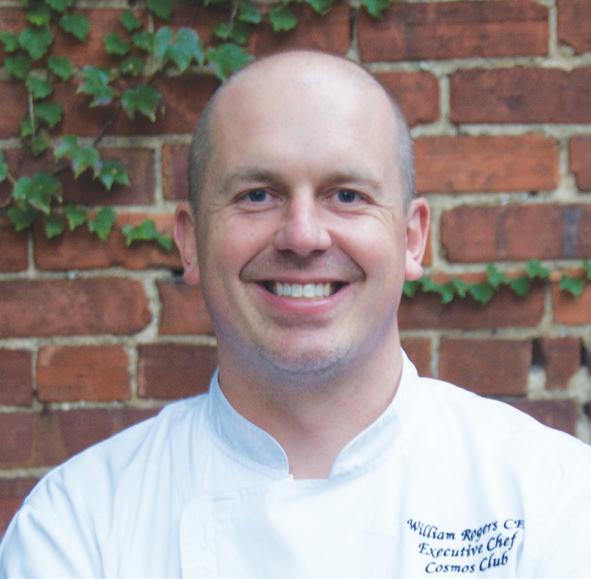
MORE ONLINE: Check out the online version of this article for downloadable resources as well as more on beverage cost controls.










